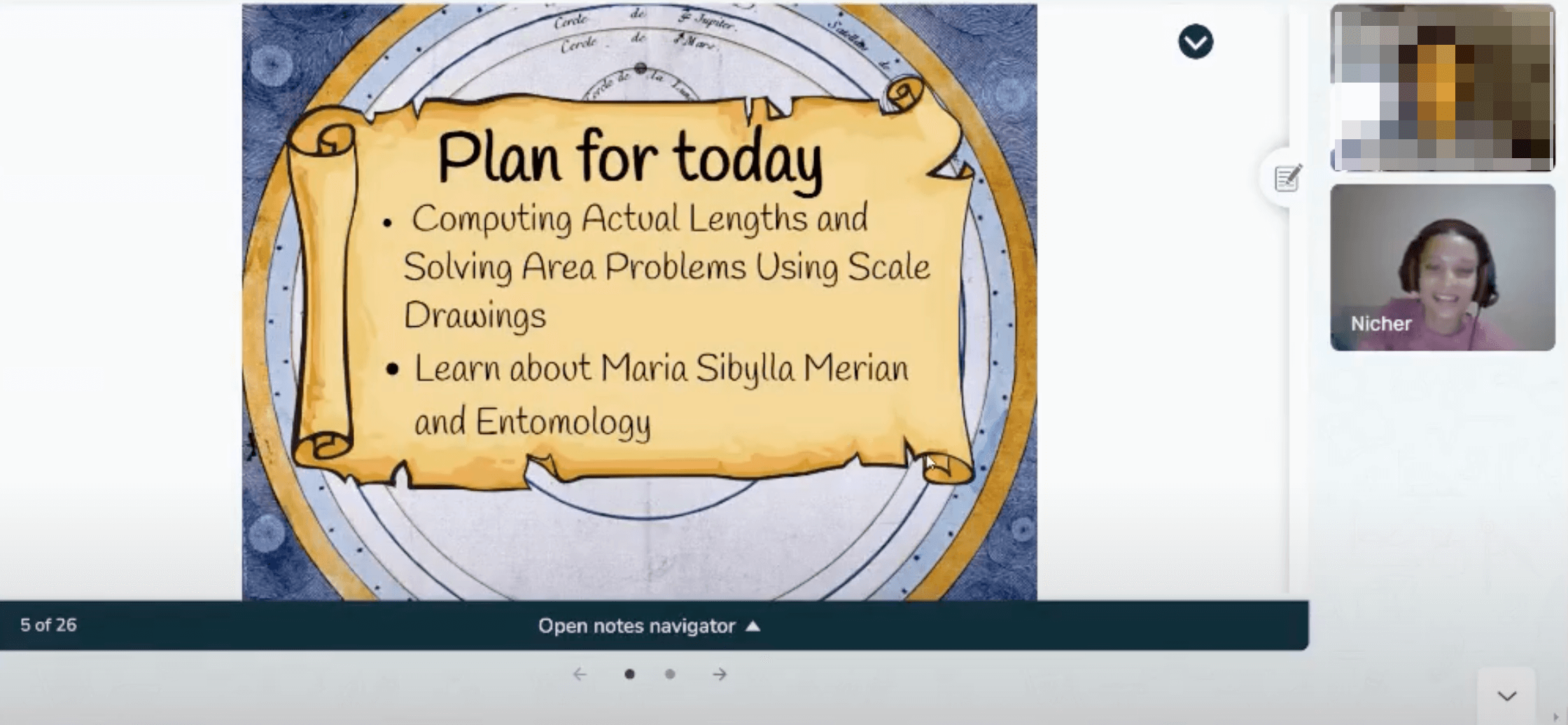Mathematical Thinking: An Essential Skill For Everyday Living
reviewed by Camille Ira B. Mendoza
Updated on April 29, 2024
Every day, kids and adults alike encounter challenges that require mathematics. You need a basic knowledge of mathematics, whether you’re going to the grocery store or just want to count the coins you gave in your piggy bank. These are classic examples of locations and situations where you regularly engage your mathematical thinking capacity.
At its core, mathematical thinking consists of working methodically and visualizing math. You don’t just cram math concepts, but go ahead and memorize and know them so they can be applied to daily activities.
So, what exactly is mathematical thinking, and what are some steps that can be taken to think mathematically? Keep reading to know more.
What is Mathematical Thinking?
Mathematical thinking is dissecting issues, identifying their constituent parts, and then developing rational plans to solve them. It is a mindset that uses mathematical concepts to address practical problems.
When kids think mathematically, they can conveniently use mathematical reasoning to think creatively in real life and handle their problems quickly. They will enjoy classroom lessons more and be able to do mental math, which will serve them well now and in the future. This use of math to glide past mental hurdles further incentivizes kids to use innovative problem-solving techniques to break down math issues into manageable chunks.
Examples of Mathematical Thinking in Everyday Life
Everyone uses mathematical thinking in everyday life. For instance, estimating how long it would take you to get to the park is already mathematical thinking. Even counting how much time you have to do a particular task is mathematical thinking.
For more detailed examples, here are three common mathematical thinking examples in everyday life:
Grocery Shopping
Nobody can escape from doing a little math when grocery shopping. First, you need to do money math by budgeting how much you will spend on groceries. Then, you estimate how much time you’ll need to shop.

After buying all the items you need, you’ll need to figure out the total cost by adding the cost prices of all the goods and deducting their corresponding discounts. Finally, you pay the cashier and use subtraction to determine the amount of change owed.
Cooking
Mathematical thinking is also used in the kitchen, especially when using recipes in baking snacks like cookies. Here, the precise measurements of each ingredient are determined by applying proportions and ratios.

For example, a baker must determine whether half a teaspoon or one teaspoon of sugar will be used for the cookies. Similarly, chefs need to know their measurements to avoid falling short of customers’ demands.
Keeping Track of Cash
Mathematical thinking will help kids learn skills that will be useful in managing their finances. With time, understanding simple and compound interest, for example, will come in handy.

Mathematical thinking will also help young high school or college students select an ideal first bank account and credit card plan. And when they start building their credit scores, it will ensure they get familiar with interest rates much faster. This could lead them to save and invest better, becoming more astute at managing their finances.
Steps to Approach Problems Mathematically
According to Polya, the steps to approach problems mathematically are understanding the problem, devising a plan, carrying out the plan, and looking back. It’s more focused on identifying the issue, formulating a strategy, putting it into action, and assessing the results.
Here is a math problem to solve for fun:
Let’s pretend that the issue at hand is that you are organizing a party and would want to provide each guest with a gift bag containing five toys. So, how many toys will you purchase for the gift bags if fifteen kids attend?
Understanding the problem
Before solving any problem, students should take a moment to understand the issue. Kids need to actively seek ways on how to solve math problems. Some tactics they can use are looking for the unknown and similarities between the problems and math concepts.
In understanding the problem, you first need to clarify the information on the number of guests and how many toys will be in each gift bag.
Devising a plan
The process of developing a solution to an issue is called devising a plan (translation). In this stage, students will try to establish relationships between the data and the unknown. You may set up an equation, create a diagram, or make a chart to solve your issue. Pick a suitable approach to handle the problem.
Simply multiply the number of guests by the product of the number of toys per bag to get the total number of toys. The formula should be something like this:
P = toys per bag (t) × number of attendees (n), where toys per bag should be 5.
Carrying out the plan
The next phase is for the student to put the plan into action. The students should double-check the solution strategy at every stage.
Carry out the measures specified in the strategy:
- Choose n = 15 and t = 5 toys per bag.
- Enter the new value into the formula: P = 5 multiplied by 15.
- Multiply the numbers: P = 75 toys.
Looking back
Kids should reflect on the answers and verify that the answer is correct and addresses the initial issue. Assuming each gift bag contains five toys, a total of 75 toys would be needed. The answer is straightforward and makes sense in light of the problem description; it solves the mathematical issue.
Polya’s approach is beneficial for students as they work to solve mathematical issues and develop mathematical thinking.
Games and Activities to Enhance Mathematical Thinking
One excellent technique to help kids improve their mathematical thinking and creative reasoning abilities is to play mathematics games with them. Playing the games lets them participate in interactive and practical math classes.
Here are three games and activities to enhance mathematical thinking in the classroom.
Math Facts Race
Split the class in half and have them stand in two lines. Put out two sets of addition or multiplication facts grids at the front of the classroom. The first person on each team has to fill in one of the numbers on their grid. For instance, 3 x 4 = 12.
The next step is to return to the beginning of the queue and transfer the marker to the first person standing there. The winner is the team whose grid is completed first.
Please, Sign My Worksheet
Playing this math game in class requires students to solve problems in a non-traditional manner. Give each student about ten math problems to solve.
Then, instead of completing their worksheets, pupils are tasked with tackling the worksheets of others. After the children solve any math problem from someone else’s worksheet, they are to sign.
Addition and Subtraction Bingo
To play, just make a deck of bingo cards and fill them out with the solutions to some basic math questions. Instead of numbers, read out math problems like “8 + 6” or “9 – 4.” The next step for students to win the bingo game is to get the correct answers.
Applying Mathematical Thinking to Solve a Sample Problem
Imagine that you’re preparing for a bake sale. According to your recipe, one cup of flour and two eggs could give you 18 cookies. Based on your estimation, you must prepare enough cookies to feed 100 individuals, providing three cookies for each person. How much of flour is required?
To solve this problem, do the following:
- Find out how many cookies are required in total: 100 people x 3 cookies per person = 300 cookies.
- Find out how many batches are required: 300 cookies ÷ 18 cookies per batch = 16.6667 batches.
- Round up to the nearest whole batch: You can’t bake a partial batch, so round 16.6667 batches up to 17 batches.
- Calculate the total flour needed: 17 batches x 1 cup/batch = 17 cups of flour.
Encouraging Mathematical Thinking at Home and School with Brighterly
Brighterly is a math educational website with tutors encouraging kids to understand math concepts instead of cramming formulas. The vetted professional tutors at Brighterly tailor lessons to children’s specific requirements instead of following the traditional school curriculum. With the individualized lesson plan from the platform, kids can learn with tutors who teach the kids real-life applications.

The instructors also make kids study math online with study-related games and videos that put them in charge of their learning process. So, the lesson plans are simple. Instead, students can conveniently learn from the comfort of their homes and apply the concepts they learned to things around them.
One notable part about using the Brighterly platform is that you can first have a trial class with them before signing up. So, it’s a foolproof registration.
Conclusion
Mathematical thinking is essential as people go about their daily activities. This article has discussed examples of its use case in the real world, proving your kids can definitely benefit from an introduction to mathematical thinking before they come of age.
Brighterly is a fun math learning website with professional tutors acknowledging that kids should do more than cram math concepts. They believe that students should grasp these concepts in their entirety to develop their mathematical critical thinking skills.
So, knowing what you know now, do you want to give your child an excellent opportunity to learn the necessary mathematical thinking skills? Register Now on Brighterly!












